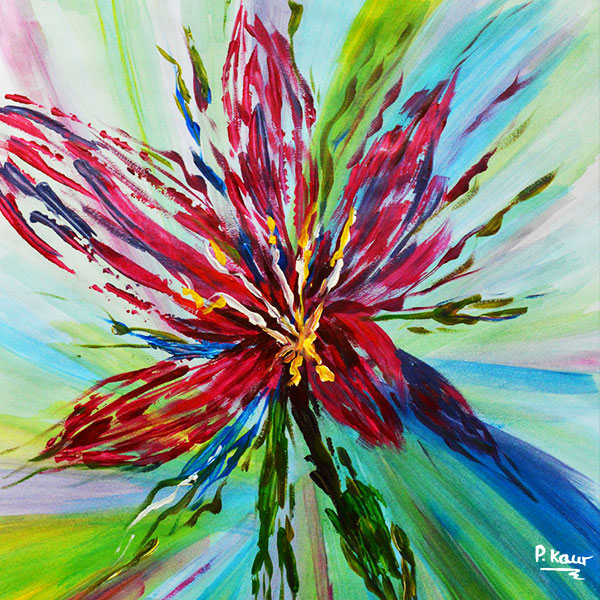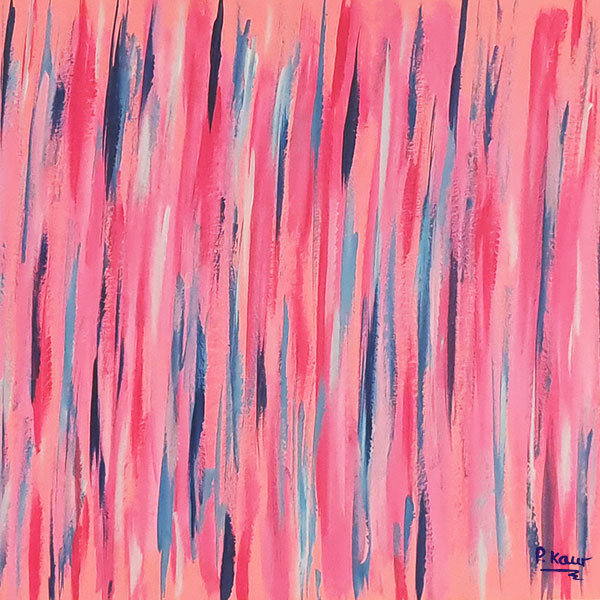Red is the first colour that all cultures shared and the first colour to be named other than black and white. It’s an elemental colour of heat, fire, blood, autumn, rust and Mars (due to the high levels of iron oxide on the surface). Red has the longest wavelength and can appear closer than it is, making it the ideal colour for stop signs.
Primates can see the full range of colour however other mammals like dogs cannot distinguish between green and red, they are seen as grey. Bulls for example are not aggravated with the colour red but the movement of the cape.
Language
The Hebrew word for Adam means red, related to ‘dam’ which means ‘blood’ so ‘a-dam’ means ‘of blood’.
There are many phrases that use the word ‘red’ in various contexts but usually with something quite primal and a high state of arousal. These would include things like ‘red-blooded male, red-hot sex, red light district’. ‘Red hot with anger’ applies to the fiery nature of the colour while the Chinese would say ‘red-eyed monster’. Red faced with embarrassment is also a common phrase, referring to the rush of blood to the face causing blushing when confronted with something embarrassing.
‘Caught red-handed’ is 15th century phrase originating in Scotland referring to those caught with blood on their hands from poaching.
‘Painting the town red’ is a 19th century debauchery phrase, emerged from use of bonfires and firecrackers on US Independence Day.
In 1850 the book called The Scarlet Letter was released. Women during this time were publicly whipped if convicted of adultery.
Meaning
The meaning of red is quite primitive and raw with high energy. On the positive side it’s warm, energetic and lustful. On the negative side it’s dangerous, angry and aggressive. It’s an exhausting colour, especially on its own and in intense tones.
Red can make one more aggressive and dominant, popular with sport uniforms. With mating, using red properly it will make one more attractive to the opposite sex. It can also come across as powerful in a business setting.
Red interferes with higher cognitive thinking so isn’t a good colour for relaxing or working. But it’s a boost on simple things like physical games.
In the East, red is consistent with good fortune and brides. In the West, it’s associated with lust, romance and anger.
Pigments
The earliest colour to be used by humans in art. Evidence has been found of the pigment being ground up 150,000 years ago of red ochre. Red, white and black were the first colours used in cave art.
Minerals provide a rich source of natural pigments. The earliest pigments were made from iron oxides that are red in colour like hematite. Another source is cinnabar which is a form of mercury sulphide. It creates the bright colour vermilion. This is also the source for Chinese red that was used for the Han dynasty. Cadmium red is a by-product of zinc ore. Minium is a bright red-orange pigment made from roasting white lead. This was commonly used in the medieval times for illustrations.
Pigments also come from plants and insects. Alizarin Crimson pigment comes from a plant commonly known as Madder and is a vivid red. This one has been used since Ancient Egyptian times. Another red pigment is made from mixing the residue left by certain insects with various binders. Using the insects themselves became popular especially with the cochineal insect from Central and South America. Another dye made from insects is Kermes, made from the dried female bodies of a scale insect.
Synthetic pigments came into play as technology advanced however there are concerns with the safety of synthetic pigments and so for food colouring for example, some have turned back to the natural pigment made from the cochineal insect.
Red pigments in plants and fruits primarily come from carotenoids and anthocyanin. The red pigment responsible for hair and lips is pheomelanin.
Using dye made from cochineal insects was popular with the Incas in 700 BCE who used it to dye fabric. When the Spanish invaded, they took the colour to Europe. It was also used for medicine, adornment and painting.
Tones
Red varies in tones to either more blue and cool or yellow and warm. Yellow tones include watermelon and rust. Cool reds include raspberry and cherry. Adding white creates light red or more commonly known as ‘pink’.
General Use of Red in Society
Palaeolithic Times
100,000 years ago – red ochre, painting bodies, grinding pigments, basic paint.
50,000 – 10,000 years ago – cave paintings, main colour is red.
Ancient Times
5,000 BCE – Ancient China, pottery found with red and black colour.
4,000 BCE – Ancient Egypt, was used as cosmetic to colour cheeks redden lips and henna. It does represent evil, destruction and life.
509 BCE – Roman calendars marked important days in red.
206 BCE – Han Dynasty in China, women in the Emperor’s harem placed a red mark on their foreheads to symbolise when they were menstruating
Middle Ages, Medieval, Renaissance
Practice was revived in Medieval Europe of having capital letters and important words highlighted in red, which continued after invention of the printing press. Later holidays were marked in red in calendars, red-letter day, term that became associated with days of significance.
1293 – First link to protest by a group of English pirates, red was defiance throughout Europe.
1600 – In German folklore there was red-cloaked girl conned by a wolf and eaten.
End of 17th century – Sumptuary laws across Europe fell into disuse however red still was preserved for noblemen. 1870s was when a cheap colourfast substitute was found, alizarin. Red then lost its aristocracy status, it became flash and vulgar.
1789 – The French revolution, red was hoisted during the storming of the Bastille
1812 – Brothers Grimm published Little Red Riding Hood
Modern Times
In the 20th century, lipstick wearing became popular following advertising and marketing.
The red carpet is a sign of high class today, however it is shifting with trends. For example, at the Met Gala 2024, the carpet was designed around the theme of ‘Garden of Time’ rather than the traditional red carpet. The first reference to red carpet comes in a Greek play. The red carpet was rolled out for President James Monroe in Georgetown South Carolina in 1821, to prevent his feet from getting muddy on riverbank.
The original Santa Claus is Saint Nicholas who was a 4th century bishop. It is said he dressed in red though this is debated. When he made his appearances in the Middle Ages, he was frequently depicted in red and also green. Across Europe and the centuries, Santa wore many colours but by the 19th century it was common place for red. The current image of Santa is thanks to Coca Cola and the Swedish illustrator Haddon Sundblom.
In 2012, people discovered that the pigment Starbucks used was from insects (the cochineal insect mentioned above) and set up a protest against Starbucks. They then replaced it with a tomato extract. Cochineal is still used in lipsticks and other cosmetics and food. It can cause allergic reactions however it’s not carcinogenic.





